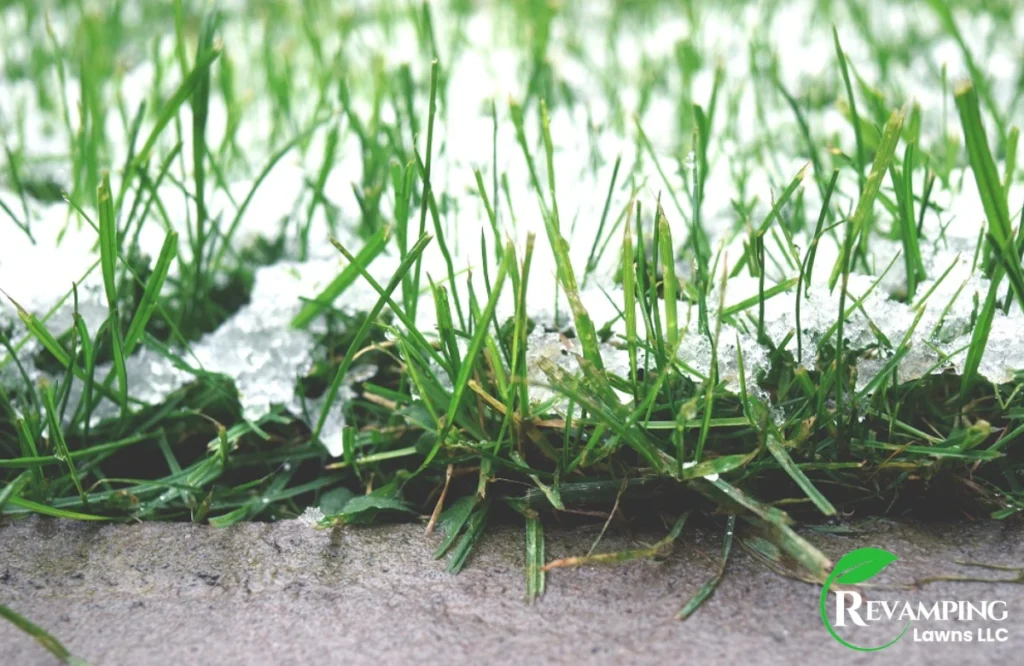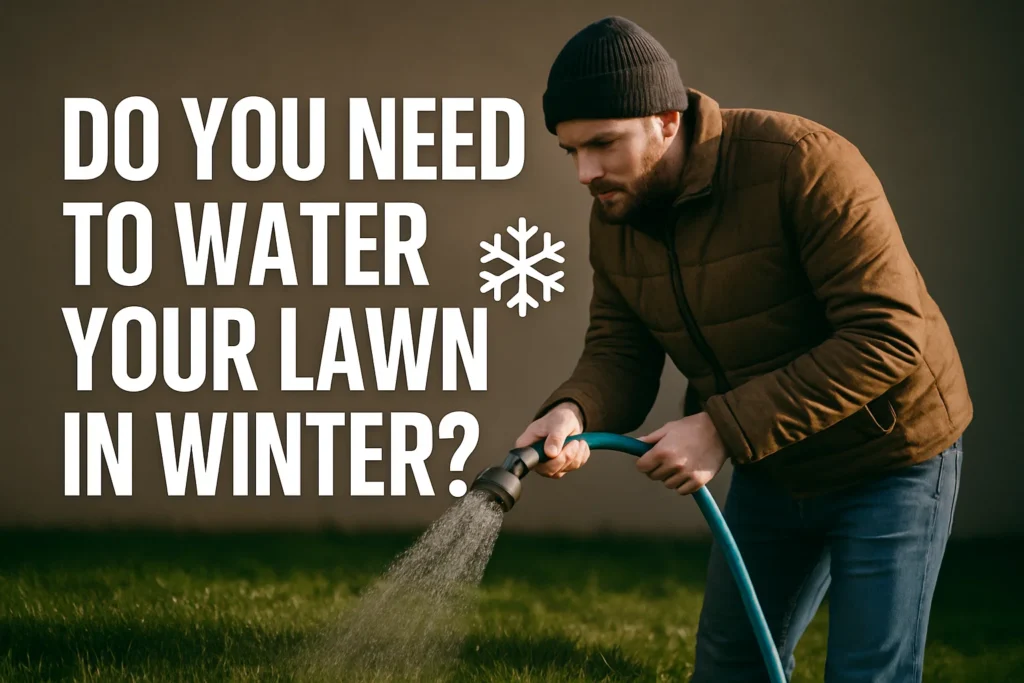Watering the lawn is a major aspect in taking care of a lawn and the question many people have is whether water is required in the cold season in winter. When grass does not grow or slows down in winter, it can be difficult to know when and how much to water. It is essential to thoroughly water the grass during winter to ensure that the roots are not spoiled by dry soil. This blog discusses the reasons why it is still important to water in winter, the frequency of watering and tricks on making sure your lawn is not droughty in winter, which may cause a lot of problems.
What Happens to Grass in Cold Weather
During cold weather, grass undergoes a natural and protective process known as dormancy. When the grass is in the dormancy stage, its growth slows down a lot or it ceases its growth in order to save energy and water. Although the grass blades might turn brown or yellow and look like dead grass, the roots are alive, and they will grow again when temperatures increase.
Moisture stress due to cold weather can also be known as desiccation since frozen soil reduces the ability of grass roots to absorb water. Certain grasses can also have continued growth at lower temperatures, namely cool-season fescue and ryegrass. The effects of prolonged freezing and snow cover may, however, put the risk of damaging or developing diseases like snow mold. In general, in order to survive the cold winter, grass reduces the rate of metabolism, which preserves its resources and endures low temperatures until spring.
Warm-Season and Cool-Season Grasses in winter
| Aspect | Warm-Season Grasses | Cool-Season Grasses |
| Growth Cycle | Active growth late spring to early fall | Active growth in spring and fall |
| Winter Behavior | Go dormant and turn brown in winter | Slow growth but often stay green longer |
| Temperature Preference | Thrive above 75°F, less cold tolerant | Prefer cooler temps, tolerate frost better |
| Common Varieties | Bermuda, Zoysia, Buffalo Grass | Fescue, Ryegrass, Kentucky Bluegrass |
| Water and Maintenance | Require less water, more drought tolerant | Need more water, higher maintenance |
| Appearance in Winter | Lose green color, appearing dormant | Usually retain some green color |
| Regional Suitability | Best in southern, warmer climates | Best in northern, cooler climates |
Does Your Lawn Need Water in Winter?
The question many homeowners ask themselves is whether the lawn should be watered in winter. Although grasses put their growth on hold or stop growing during the cold seasons, the lawn also needs some amount of water to ensure the roots are healthy and do not dry up. Sprinkling your lawn at the right time during winter is the trick to making sure that the grass survives through the dry seasons and then you are ready to sprout as summer arrives.
The winters are quite varied and the watering requirement is dependent on such factors as the local climate, snow and rainfall. In heavy snow or rainy areas, natural moisture can suffice. Nevertheless, during dry or moderate winter seasons, watering occasionally is crucial to keep the soil moist and prevent dry root stress. The best thing in year-round lawn maintenance is understanding how and when to water your lawn in the winter months.
Risks of Overwatering in Winter

Root Suffocation and Rot
In winter, the ground gets flooded, drowning out the oxygen to grass roots. Roots can rot and suffocate in the absence of sufficient oxygen. This makes the grass weakened, leaving it exposed to the threats of winter.
Fungal Disease Growth
Moisture leads to fungal infections such as snow mould and root rot. Such fungi grow well under cool weather and they may lead to severe destruction of grass foliage and roots.
Nutrient Loss and Pests
Excess water erodes the soil of key nutrients, making the Attic lawn less productive. It also promotes the pests that like a damp place and severely damage the health of your lawn.
Prevention Tips
The solutions to these risks are to avoid using too much water in winter and to make sure you never water the soil without checking the moisture. Remember not to water when the soil is frozen or already wet.
When and How Often Should You Water in Winter?
You must water your lawn in winter, but be careful and less active than in summer. During winter, it is recommended that you water the lawn once or twice a month, depending on rainfall and snow. The trick is ensuring that one monitors soil moisture; once the soil starts to feel dry several inches beneath the soil surface, then it’s time to water.
Water should be done in the mid-morning hours or early afternoon when the weather is warmer. This enables soaking of the water into the soil before the temperatures go down at night, avoiding the chances of ice forming over the grass or the soil. The target is one-half to one inch of water per month, depending on your area’s weather conditions and the state of your lawn. Timely root and adequate watering frequency ensure healthy roots without the over-watering issues such as fungus.
Conclusion
Winter watering is an important step to keeping a healthy lawn throughout the year. Grass growth diminishes during the colder months; however, overwatering to maintain moisture in the soil prevents root dry-up as well as winter damage. Frequent and timely watering will prepare a glossy, green lawn in spring by adjusting watering and timing to the weather. If you want professional winter lawn services, including customized irrigation schedules, then rely on Revamping Lawn to maintain your lawn alive and healthy all year round.
FAQs
Yes, we still need water on the lawns in winter, but less than in summer.
Once or twice a month normally, based on precipitation and soil moisture.
The water in the mid-morning and early afternoon when the weather is warmer.
About half an inch to one inch per month, adjusted for rainfall or snow.
Root rot and fungal diseases as well as loss of nutrients, can occur from overwatering.



